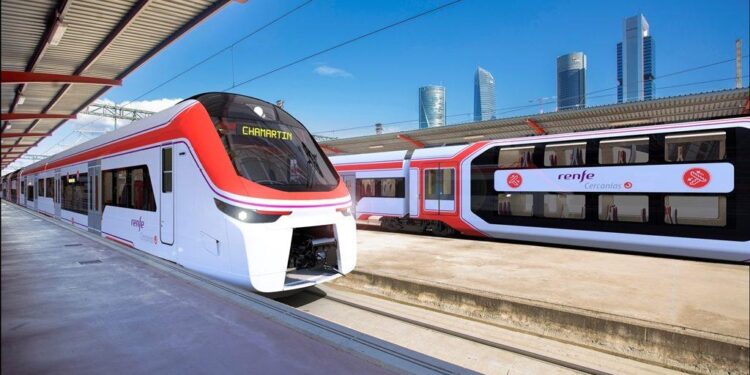Alstom, a leading global player in rail transport, has unveiled a comprehensive plan outlining five key measures aimed at enhancing Sweden’s railway system. The proposals focus on boosting operational efficiency and fostering innovation within the country’s rail infrastructure. As Sweden seeks to modernize its transportation network and meet increasing demand for sustainable mobility, Alstom’s recommendations offer actionable steps to streamline services, integrate cutting-edge technologies, and support long-term growth. This development marks a significant contribution to ongoing discussions about the future of Swedish railways and their role in advancing the nation’s connectivity and environmental goals.
Alstom Outlines Strategic Measures to Enhance Sweden’s Railway Efficiency
Alstom has laid out a comprehensive plan targeting the modernization and increased sustainability of Sweden’s railway infrastructure. Central to their approach is the adoption of cutting-edge technologies such as digital signalling and predictive maintenance systems, designed to reduce delays and maintenance costs. The company also emphasizes the integration of renewable energy sources into the rail network, aiming to decrease carbon emissions and promote greener travel options across the country.
Additionally, Alstom proposes enhancing interoperability among existing rail operators to streamline operations and boost capacity on congested routes. The strategy includes developing smart mobility solutions that leverage data analytics for improved passenger experience. The following pillars summarize the key strategic measures presented:
- Digital Signalling Systems: Implementing ERTMS Level 2 to enhance safety and traffic management.
- Predictive Maintenance: Utilizing AI-driven analytics to forecast maintenance needs.
- Energy Efficiency: Incorporating renewable energy solutions and energy recovery techniques.
- Interoperability: Standardizing systems to allow seamless cross-operator services.
- Smart Mobility: Deploying real-time data platforms to optimize passenger flow and scheduling.
| Measure | Expected Impact |
|---|---|
| Digital Signalling | 30% reduction in delays |
| Predictive Maintenance | 20% decrease in downtime |
| Energy Efficiency | 40% lower CO2 emissions |
| Interoperability | Improved cross-border traffic flow |
| Smart Mobility | Enhanced passenger satisfaction |
Focus on Innovation and Sustainability in Proposed Railway Improvements
Alstom’s proposal emphasizes cutting-edge technologies designed to enhance both operational efficiency and environmental responsibility within Sweden’s rail network. Central to this vision is the integration of advanced digital signaling systems that optimize traffic flow and minimize delays. Coupled with the deployment of energy-efficient rolling stock, these innovations promise to reduce carbon emissions and set new standards for sustainable transportation.
The plan also highlights key strategies targeting ecological sustainability, such as:
- Use of renewable energy sources to power trains and infrastructure
- Implementation of regenerative braking systems to recover energy during stops
- Lightweight materials to reduce overall train mass and energy consumption
- Optimization of maintenance processes to extend asset life and reduce waste
| Measure | Expected Benefit | |
|---|---|---|
| Digital Signaling Upgrade | Increased network capacity & reduced delays | |
| Renewable Energy Integration | Lower carbon emissions & sustainable power use | |
| Regenerative Braking | Energy recovery during deceleration | |
| Lightweight Train Materials | Reduced energy consumption | |
| Optimized Maintenance | Extended asset life & less waste |
| Measure | Expected Benefit | |
|---|---|---|
| Digital Signaling Upgrade | Increased network capacity & reduced delays | |
| Renewable Energy Integration | Lower carbon emissions & sustainable power use | |
| Regenerative Braking | Energy recovery during deceleration | |
| Lightweight Train Materials | Reduced energy consumption |
| Measure | Impact | Estimated Implementation Time |
|---|---|---|
| Advanced Signaling | +30% Network Capacity | 3 Years |
| Track Electrification | Reduced COâ‚‚ Emissions by 25% | 5 Years |
| Predictive Maintenance | 40% Lower Downtime | 2 Years |
Future Outlook
As Sweden’s railway network faces growing demands for efficiency and innovation, Alstom’s proposed measures offer a strategic roadmap aimed at revitalizing the sector. By focusing on modernization, digitalization, and sustainability, these initiatives have the potential to enhance operational performance and support the country’s broader transportation goals. The coming months will be critical as stakeholders assess the feasibility and impact of Alstom’s recommendations, with the hope that their implementation will set a new standard for Sweden’s railways and contribute to the future of European rail transport.
















